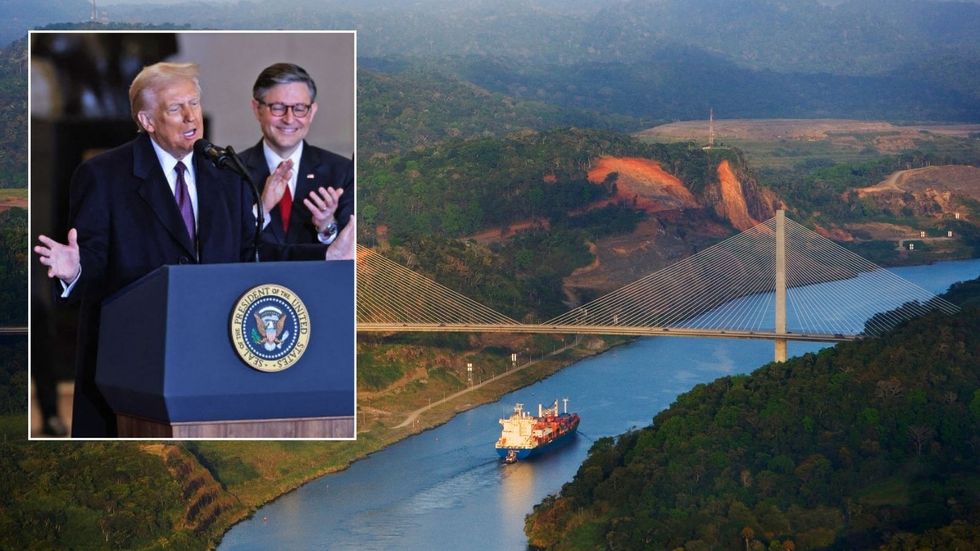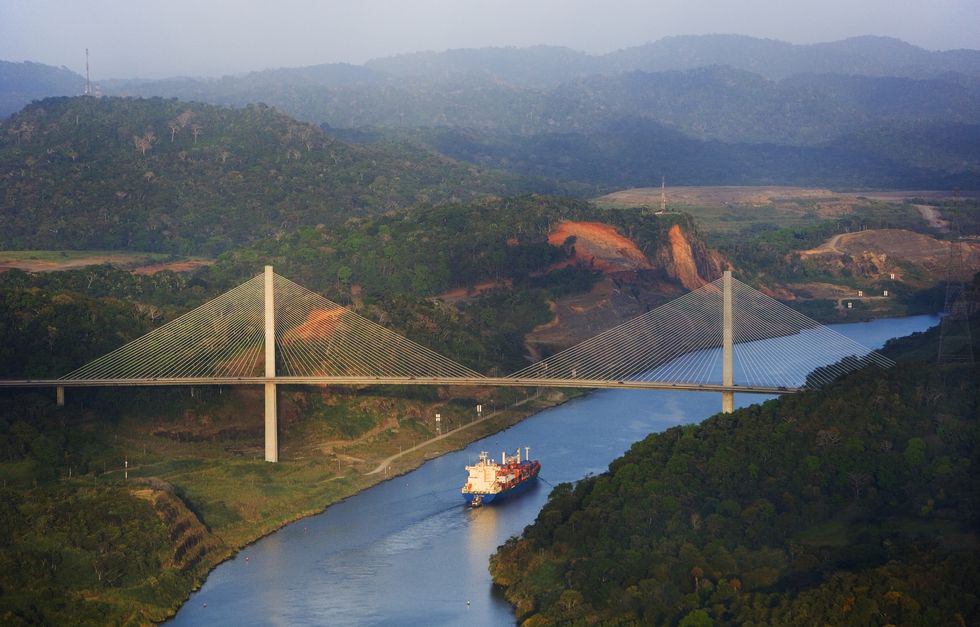The Panama Canal connects the Caribbean Sea with the Pacific Ocean, providing a crucial shortcut between the Atlantic and Pacific oceans for maritime traffic.
The United States handed Panamanian control of the canal in 1999 after overseeing its construction and operation for most of the 20th century.
The waterway offers significant security and economic advantages for the United States.
According to shipping expert and college professor Sal Mercogliano, the US remains “the biggest single user of the canal, outshining everyone probably combined.”

The Panama Canal connects the Caribbean Sea with the Pacific Ocean, providing a crucial shortcut between the Atlantic and Pacific oceans for maritime traffic
Getty
The strategic importance of the canal has heightened tensions over its control and operation, with Washington increasingly focused on maintaining its interests in the region.
Chinese infrastructure development has expanded significantly around the canal over the past three decades.
Projects in the area include a canal bridge, new subway line and cruise-ship terminal.
Trump administration officials argue these developments violate the US-Panama treaties signed when Washington transferred control of the American-built canal.
During his inauguration speech on Monday, US President Donald Trump declared that America will “take back” the Panama Canal, citing concerns over Chinese influence and high shipping rates.
The newly sworn-in president accused China of mismanaging the vital waterway, which handles approximately 3 per cent of global seaborne trade annually.
“Panama’s promise to us has been broken,” Trump said in his speech. “The purpose of our deal and the spirit of our treaty has been totally violated.”
The president claimed American vessels, including Navy ships, face severe overcharging and unfair treatment at the waterway.
“China is operating the Panama Canal and we didn’t give it to China, we gave it to Panama and we’re taking it back,” Trump declared.
US officials have expressed growing concern about Chinese companies’ presence in the region, including a Hong Kong-based firm operating terminals at both ends of the canal.
Panama’s President Jose Raul Mulino swiftly rejected Trump’s claims, stating on social media platform X that the Panama Canal “is and will continue to be Panamanian.”
China’s Foreign Ministry also responded to Trump’s accusations, with a spokesman emphasising Beijing’s position on the waterway.
“China will, as always, respect Panama’s sovereignty over the canal and recognise the canal as a permanently neutral international waterway,” the spokesman said.

The strategic importance of the canal has heightened tensions over its control and operation, with Washington increasingly focused on maintaining its interests in the region
Getty
The treaties specifically required the canal to remain neutral after the handover to Panama, according to The Wall Street Journal.
Officials in Washington view China’s growing presence in the region as a challenge to this neutrality requirement.
A severe drought in the region has compounded tensions over the canal’s operations in recent months.
The water shortage has affected the canal’s freshwater-